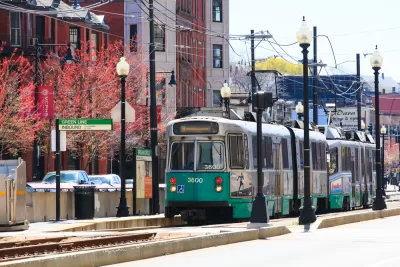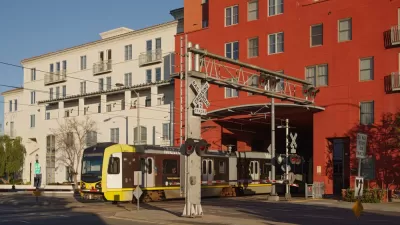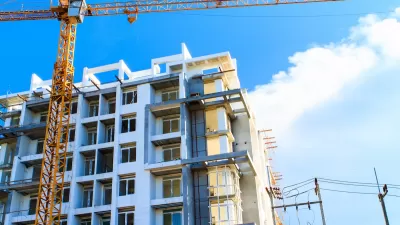The MBTA Communities law sets ‘minimum multi-family unit capacity’ for communities located near transit stations to boost higher-density housing development in transit-rich areas.

Writing in Commonwealth Magazine, Amy Dain explains Massachusetts’ new MBTA Communities law, which requires “cities and towns served by the MBTA (outside of Boston) to zone a district “of reasonable size” for multi-family housing near MBTA stations, where practical.”
Dain describes the measure used by the state to calculate ‘reasonable size,’ what the state calls “minimum multi-family unit capacity” or zoning capacity. “If you draw a zoning district for multi-family housing (defined as buildings with three or more dwelling units) on a municipal zoning map, you can add up how many housing units in multi-family buildings could theoretically and maximally be built on every existing parcel in the district, based on what the zoning allows, regardless of what exists on each parcel or what the market might favor for each parcel. This count yields the zoning capacity of the district for multi-family housing,” Dain writes.
Notably, “Zoning capacity is not a home production goal,” but “a legal envelope of allowed buildings; an estimated count of technically allowed dwelling units.” Requirements for each community will vary based on the type of transit present, existing density, and other factors. “A district that is reasonable in one city or town may not be reasonable in another city or town, the guidelines explain.”
FULL STORY: What the MBTA Communities law means for your town

Study: Maui’s Plan to Convert Vacation Rentals to Long-Term Housing Could Cause Nearly $1 Billion Economic Loss
The plan would reduce visitor accommodation by 25,% resulting in 1,900 jobs lost.

North Texas Transit Leaders Tout Benefits of TOD for Growing Region
At a summit focused on transit-oriented development, policymakers discussed how North Texas’ expanded light rail system can serve as a tool for economic growth.

Using Old Oil and Gas Wells for Green Energy Storage
Penn State researchers have found that repurposing abandoned oil and gas wells for geothermal-assisted compressed-air energy storage can boost efficiency, reduce environmental risks, and support clean energy and job transitions.

Santa Barbara Could Build Housing on County Land
County supervisors moved forward a proposal to build workforce housing on two county-owned parcels.

San Mateo Formally Opposes Freeway Project
The city council will send a letter to Caltrans urging the agency to reconsider a plan to expand the 101 through the city of San Mateo.

A Bronx Community Fights to Have its Voice Heard
After organizing and giving input for decades, the community around the Kingsbridge Armory might actually see it redeveloped — and they want to continue to have a say in how it goes.
Urban Design for Planners 1: Software Tools
This six-course series explores essential urban design concepts using open source software and equips planners with the tools they need to participate fully in the urban design process.
Planning for Universal Design
Learn the tools for implementing Universal Design in planning regulations.
Ascent Environmental
Borough of Carlisle
Institute for Housing and Urban Development Studies (IHS)
City of Grandview
Harvard GSD Executive Education
Toledo-Lucas County Plan Commissions
Salt Lake City
NYU Wagner Graduate School of Public Service





























